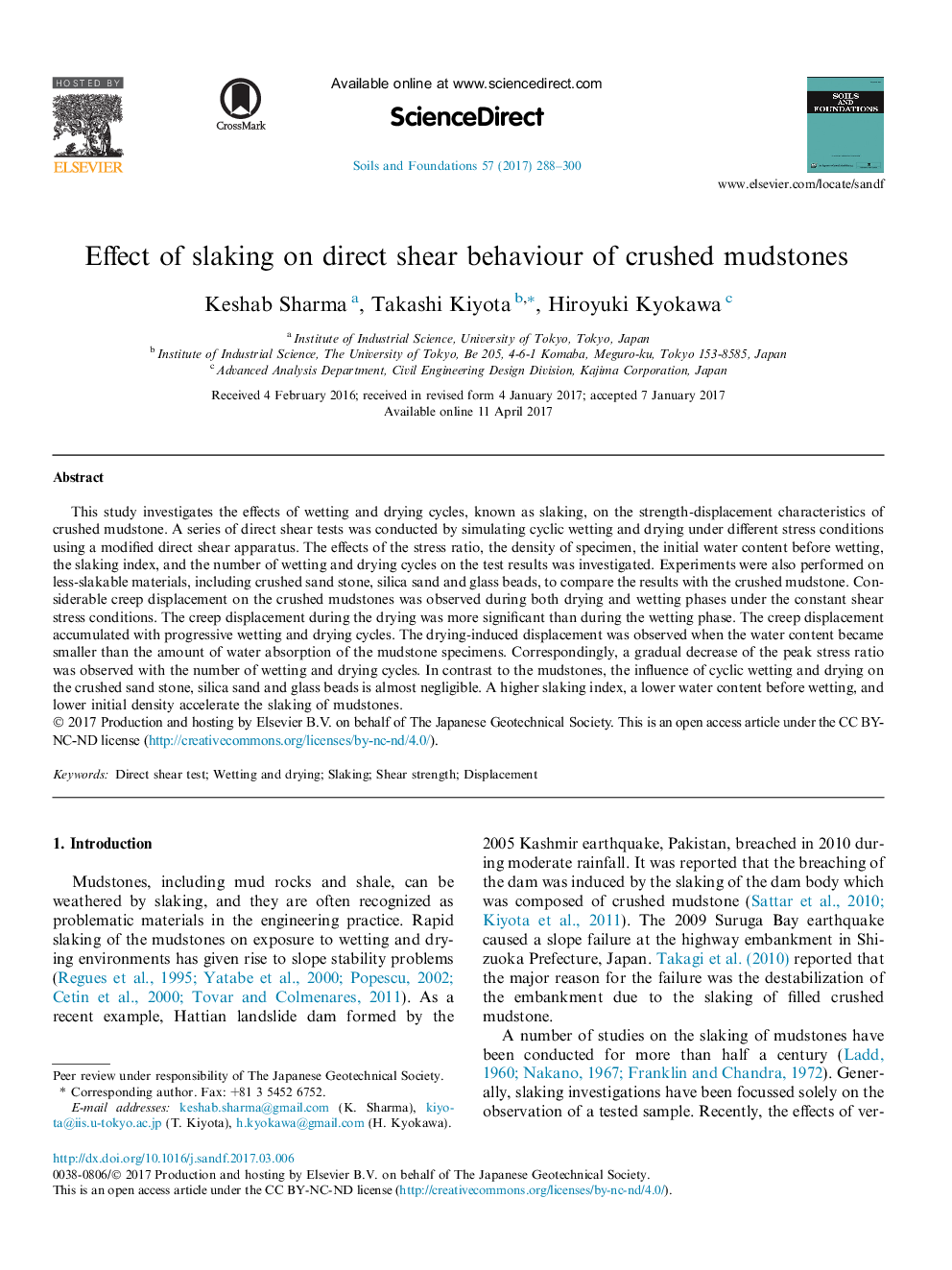| Article ID | Journal | Published Year | Pages | File Type |
|---|---|---|---|---|
| 4927721 | Soils and Foundations | 2017 | 13 Pages |
Abstract
This study investigates the effects of wetting and drying cycles, known as slaking, on the strength-displacement characteristics of crushed mudstone. A series of direct shear tests was conducted by simulating cyclic wetting and drying under different stress conditions using a modified direct shear apparatus. The effects of the stress ratio, the density of specimen, the initial water content before wetting, the slaking index, and the number of wetting and drying cycles on the test results was investigated. Experiments were also performed on less-slakable materials, including crushed sand stone, silica sand and glass beads, to compare the results with the crushed mudstone. Considerable creep displacement on the crushed mudstones was observed during both drying and wetting phases under the constant shear stress conditions. The creep displacement during the drying was more significant than during the wetting phase. The creep displacement accumulated with progressive wetting and drying cycles. The drying-induced displacement was observed when the water content became smaller than the amount of water absorption of the mudstone specimens. Correspondingly, a gradual decrease of the peak stress ratio was observed with the number of wetting and drying cycles. In contrast to the mudstones, the influence of cyclic wetting and drying on the crushed sand stone, silica sand and glass beads is almost negligible. A higher slaking index, a lower water content before wetting, and lower initial density accelerate the slaking of mudstones.
Related Topics
Physical Sciences and Engineering
Earth and Planetary Sciences
Geotechnical Engineering and Engineering Geology
Authors
Keshab Sharma, Takashi Kiyota, Hiroyuki Kyokawa,
